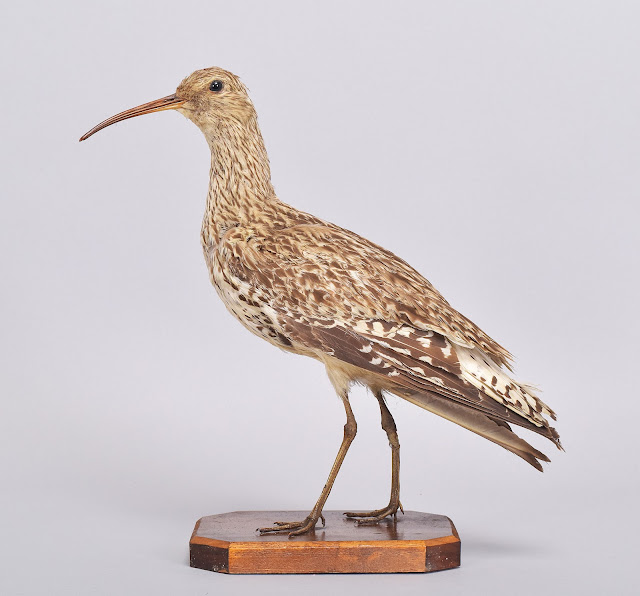 |
| Sadness in the eye? The bird that will go under the hammer at Yorkshire auction on April 16 |
THE Slender-billed Curlew is not alive and well and is reckoned by 'experts' almost certainly to be extinct.
Which is why a stuffed specimen is likely to be of special interest to birders when it goes under the hammer at a taxidermy auction in Yorkshire later this week.
According to Leyburn-based auction house Tennants, the bird, which is mounted on a mahogany base, is of early 20th Century origin. Its overall height is 33.5cm.
How it came to be on the market in Britain is something of a mystery given that it was once in a museum in Belgium - as denoted by a label purporting the identification on the underside of the base.
The last officially verified record of the species was in Morocco in 1995.
Reports in subsequent years - including at Druridge Pools in Northumberland (1998) and Minsmere in Suffolk (2014) as well as in the Danube Estuary - were temporarily given credence, only to be dismissed (not necessarily without acrimony) on closer scrutiny of the evidence.
In 1998, multinational chemical company Bayer co-sponsored an expedition to Kazakhstan in a quest for breeding grounds of the bird, but it had no success.
Compared to the Eurasian Curlew which, though declining is still widespread, its Slender-billed cousin is - or was - whiter on the breast and tail with a shorter, more slender bill, slightly straighter at the base.
But similarity to its juvenile Eurasian counterpart has always made identification a challenge.
Historically its breeding grounds were in bogs in Russia and Kazakhstan with winters spent on coastal mudflats in the Mediterranean and Arabia.
As has so often been the case, its demise is generally attributed to hunting and loss of habitat.
It was declared globally extinct in November last year.
But back to the stuffed bird now residing in a salesroom in North Yorkshire.
According to Tennants, the pre-sale estimate is that the hammer will come down at between £300 and £500 at the auction which is scheduled for April 16.
* Photographs: Tennants of Leyburn www.tennants.co.uk
 |
| Whiter plumage than the Eurasian Curlew |
 |
| Identification label on base of mahogany mount |























.JPG)
.JPG)
.JPG)




